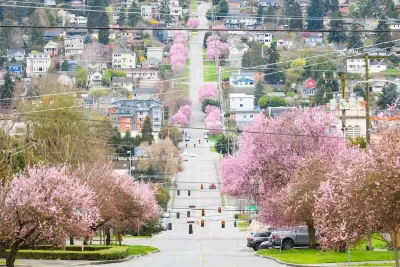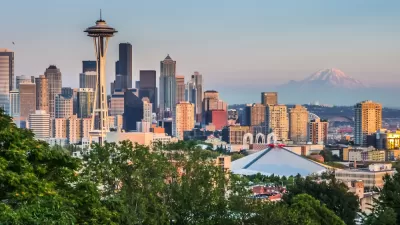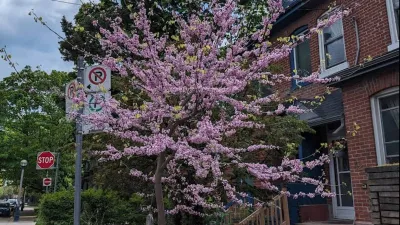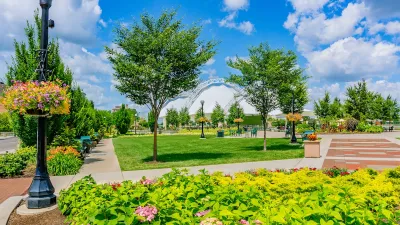Seattle’s goal to cover 30 percent of the city with tree canopy by 2037 doesn’t need to be sacrificed in favor of density. There’s a better way.

Seattle could more easily reach its goal of having 30 percent of the city covered by trees by 2037 by eliminating a third of city-owned parking spaces in favor of trees and plants, writes Ryan DiRaimo in an opinion piece for The Urbanist.
“It’s not as far-fetched as it sounds. Paris has taken on a similar pledge, promising to replace 60,000 parking spots with street trees by 2030. Paris spans just 41 square miles, so the equivalent goal in 84-square-mile Seattle would be double,” DiRaimo adds.
Most of Seattle’s tree canopy loss between 2112 and 2021, according to the Tree Canopy Assessment, has happened in the city’s parks (46 percent) and single-family neighborhoods (35 percent). Just 10 percent of tree loss occurred due to multifamily development.
According to DiRaimo, “Seattle owns more than 15,000 intersections citywide, and 9,600 of them are on quiet, low-traffic streets inside our grid of neighborhoods. If we convert eight parking spaces into trees, build planted curb bulbs and roundabouts with trees, then each intersection can become 17 new trees. Doing this citywide adds nearly 165,000 trees.”
Ultimately, there’s no need to pit density against trees when pavement takes up a third of the city. “We shouldn’t be fighting more housing as we lower emissions, we should encourage it and find solutions that include trees.”
FULL STORY: Op-Ed: Convert Street Parking to Trees to Hit Seattle Canopy Goals Sooner

Manufactured Crisis: Losing the Nation’s Largest Source of Unsubsidized Affordable Housing
Manufactured housing communities have long been an affordable housing option for millions of people living in the U.S., but that affordability is disappearing rapidly. How did we get here?

Americans May Be Stuck — But Why?
Americans are moving a lot less than they once did, and that is a problem. While Yoni Applebaum, in his highly-publicized article Stuck, gets the reasons badly wrong, it's still important to ask: why are we moving so much less than before?

Research Shows More Roads = More Driving
A national study shows, once again, that increasing road supply induces additional vehicle travel, particularly over the long run.

Judge Halts Enforcement of Anti-Homeless Laws in Grants Pass
The Oregon city will be barred from enforcing two ordinances that prosecute unhoused residents until it increases capacity and accessibility at designated camping sites.

Advancing Sustainability in Los Angeles County Schools
The Los Angeles County Office of Education’s Green Schools Symposium brings together educators, students, and experts to advance sustainability in schools through innovative design, climate resilience strategies, and collaborative learning.

Using Old Oil and Gas Wells for Green Energy Storage
Penn State researchers have found that repurposing abandoned oil and gas wells for geothermal-assisted compressed-air energy storage can boost efficiency, reduce environmental risks, and support clean energy and job transitions.
Urban Design for Planners 1: Software Tools
This six-course series explores essential urban design concepts using open source software and equips planners with the tools they need to participate fully in the urban design process.
Planning for Universal Design
Learn the tools for implementing Universal Design in planning regulations.
City of Moreno Valley
Institute for Housing and Urban Development Studies (IHS)
City of Grandview
Harvard GSD Executive Education
NYU Wagner Graduate School of Public Service
City of Cambridge, Maryland
Newport County Development Council: Connect Greater Newport





























